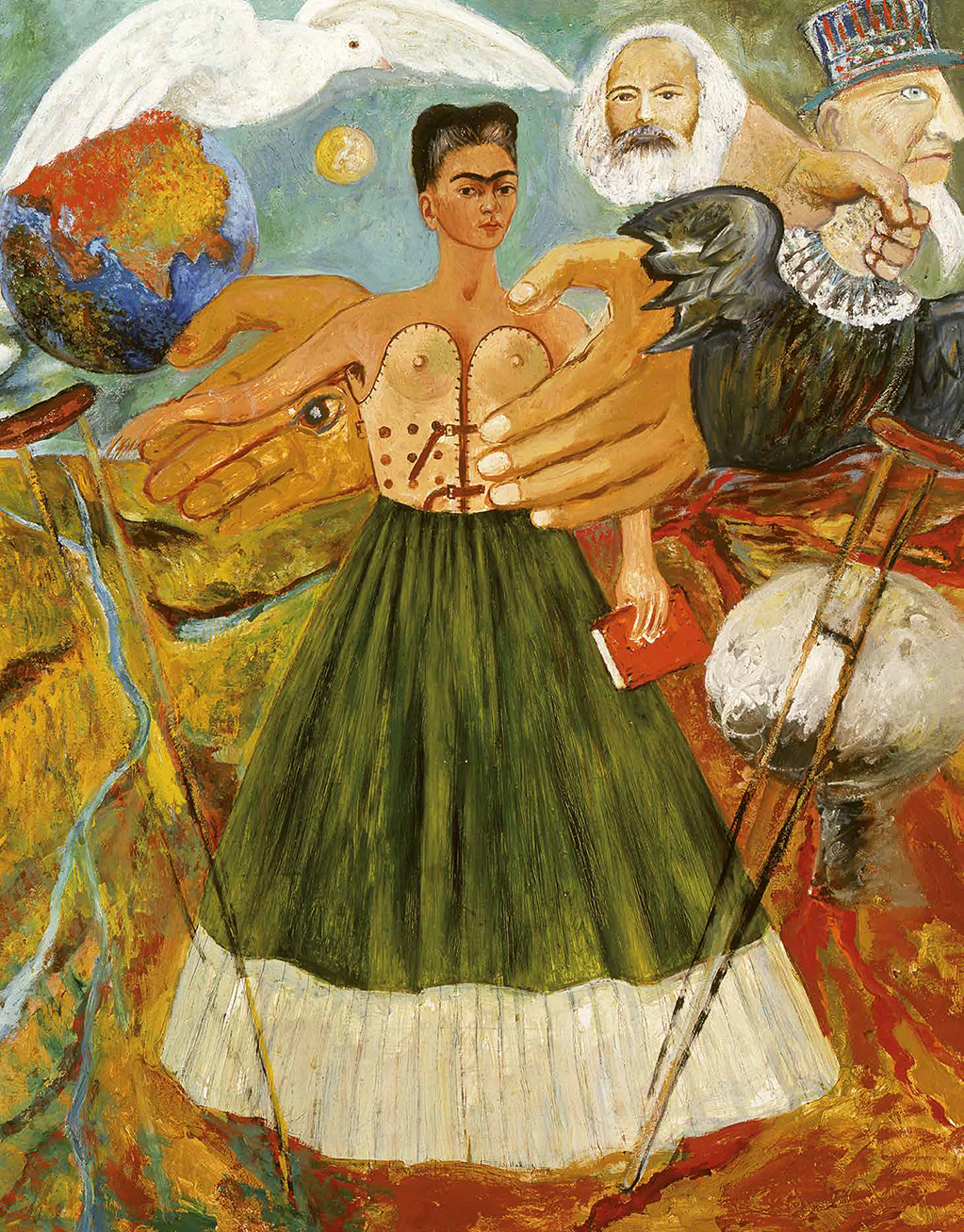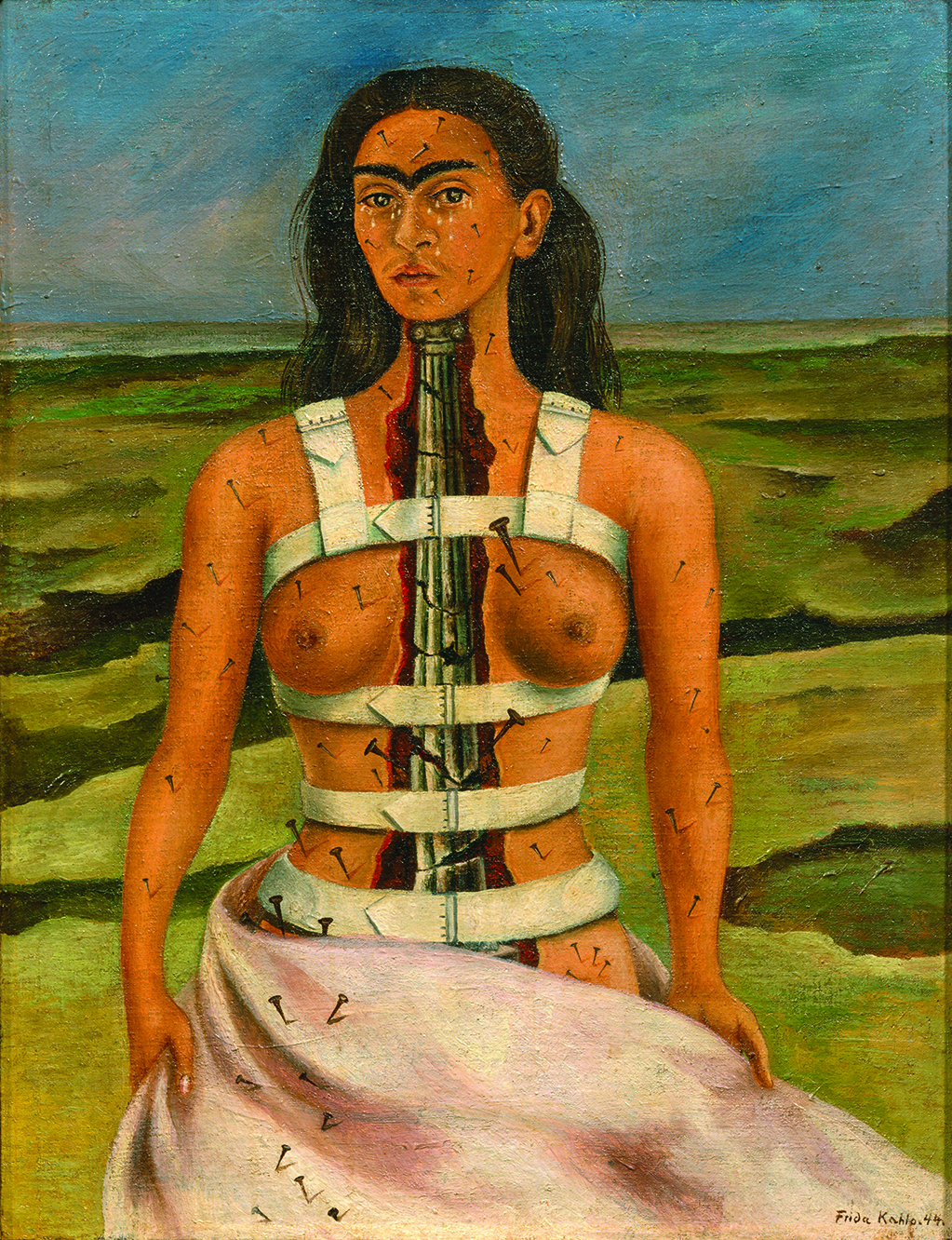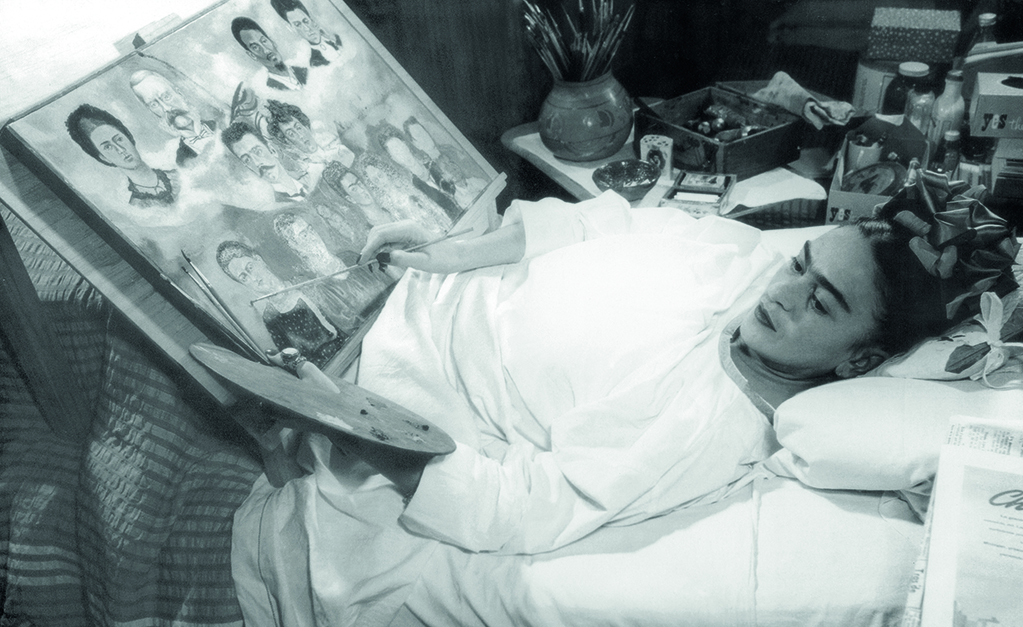Passionate and Rebel: The Power of Frida Kahlo
Frida Kahlo, with her appetite for breaking rules both in art and in life, has become one of the most influential artists in contemporary history. For International Women’s Day on March 8, we want to remember why she is a symbol for all women who have dared to be different.
A One-of-a-Kind Artist
She deviated from the conventions surrounding sexuality, artistic expression and political ideology at a time when most women were utterly trapped within prescribed roles. Her personality and insurmountable energy, which are manifested in her self-portraits, have landed Frida Kahlo the role of feminist icon.
Her life was plagued with illness and rocky relationships, to which she responded with vibrant creativity and the unrelenting pursuit of freedom of both body and soul throughout her lifetime.

Marxism will give health to the sick, 1954. Frida Kahlo Museum, Mexico City.
A Timeless Image Transcending Style
She was one of the first women to use her own image as a symbol of independence. She reclaimed her indigenous roots by adopting the tehuana costume, originally from Oaxaca, with which she proudly expressed her commitment to Mexican culture.
She endorsed natural beauty without shame, refusing to hide what the canons of the time considered imperfections. Thus, her features (bushy eyebrows, facial hair) are central to our concept of Frida Kahlo: a woman who dictated her own aesthetic standards. In this sense, too, she was ahead of her time.

Left: Frida Kahlo with her monkey, 1944.
Right: detail of Self-Portrait with Thorn Necklace and Hummingbird, 1940. Oil on canvas on masonite, 62.5 x 48 cm.
Passion Without Prejudice
She had sentimental relationships with both men and women, uninhibited and with no regrets. She simply could not be governed by the established rules regarding sexuality. In several of her drawings there are references to some of her secret love affairs, both occasional and long-term.
The body was for her the main domain of experience, which was a transgressive attitude at the time. To seek beauty was to chase away pain and combat detachment.

Diego Rivera signs the certificate of the second marriage with Frida Kahlo, celebrated in San Francisco three days later, on December 8, 1940.
Courage to Take On Suffering
Kahlo did not spend her days illustrating female stereotypes or creating decorative prints. Her paintings instead reveal a stark reality. Scenes depicted in her work like that of a bleeding woman or an unborn child were then considered inappropriate in art.
Frida Kahlo exhibited her most intimate fantasies but also her fears and health problems. Transforming her pain into art allowed her to keep her strength intact. That is why in self-portraits such as La columna rota (The Broken Column) her gaze continues to impress us today.

The broken column, 1944. Oil on masonite, 39 x 30.5 cm. Dolores Olmedo Museum, Mexico City.
Rebellion is Also in the Imagination
During her short life (she died at the age of 47), Frida Kahlo did have time to discover that our dreams do not always come to fruition. As she herself commented: “There have been two grave accidents in my life. The first one when a streetcar ran me over… The other accident was Diego.”
She refers here to the accident she survived at the age of 18 and to her husband, the artist Diego Rivera, with whom she had a complicated relationship pockmarked by cheating and disappointments. Both accidents left lasting consequences, which forced her to face her greatest fear: loneliness.
Despite all of this, Frida Kahlo responded to adversity with imagination and creativity. And, as evidenced in her drawings, she never gave up on dreaming.

Frida Kahlo in bed, painting the oil My family, 1949
The Dreams of Frida Kahlo in ARTIKA
- This is the first rigorous study of Frida Kahlo’s most intimate and unknown works by the best experts in the field.
- Worldwide limited edition with just 2998 copies.
- Her drawings include self-portraits, fantasies and depictions of friends and lovers.

